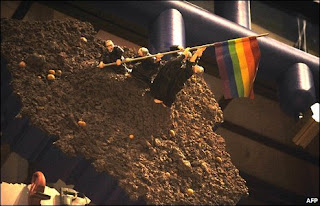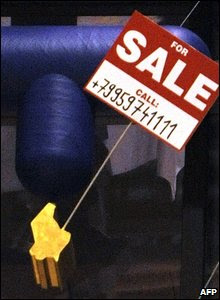
Entropa is a sculprute created by Czech artist David Černý under commission for the Czech Republic to mark the occasion of its presidency of the Council of the European Union. The sculpture was supposed to have been created jointly by 27 artists and artist groups from all member countries of the EU; but in a hoax, Černý and his three assistants created the satirical and controversial work depicting pointed stereotypes of European nations and fake artist profiles complete with invented descriptions of their supposed contributions. The piece was unveiled on 12 January 2009. Moving and multimedia components were activated on the formal "launch date" of 15 January 2009. It is on display in the Justus Lipsius building in Brussels; a copy of it may appear on the wall of the New Scene of the National Theatre in Prague.
The Council of the EU has a rotary presidency system, whereby the governments of member countries exchange leadership every six months. It is customary for the presiding country to place an exhibit in the Justus Lipsius building, which are normally uncontroversial. France which held the presidency before the Czech Republic, had simply erected a large balloon in the French national colours.
Here are some countries:

Romania

Poland

Netherlands

Luxembourg

Bulgaria

France

Germany

Italy
